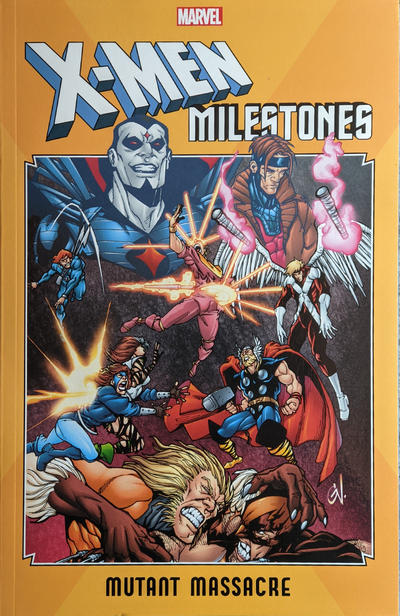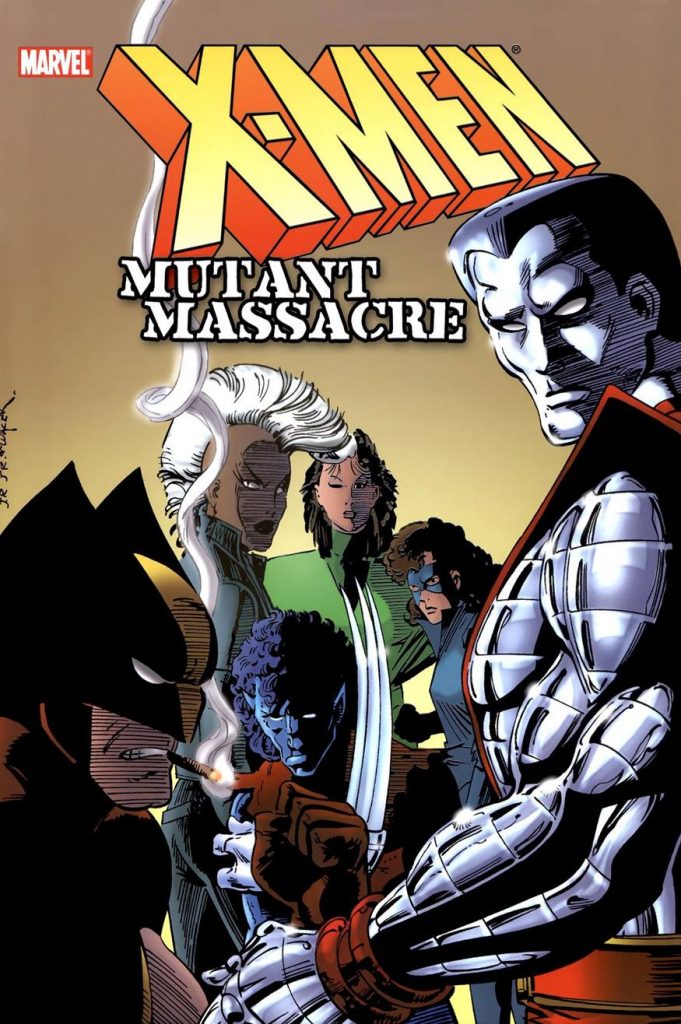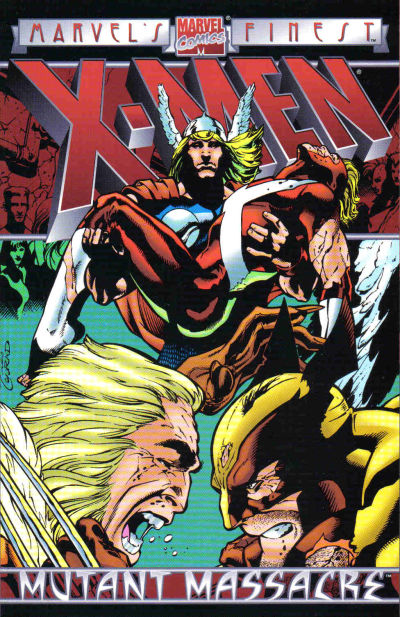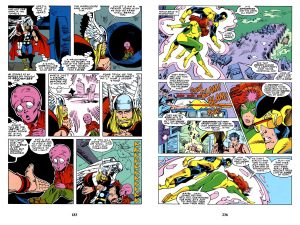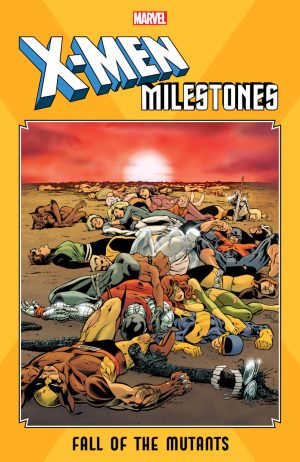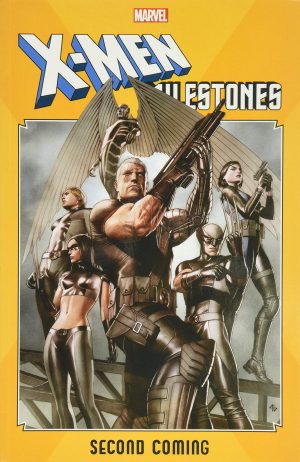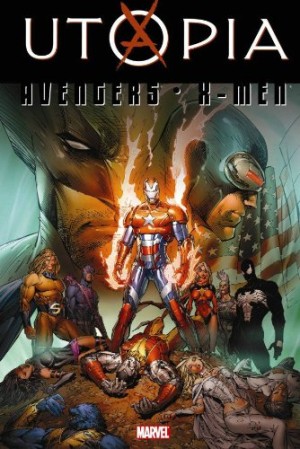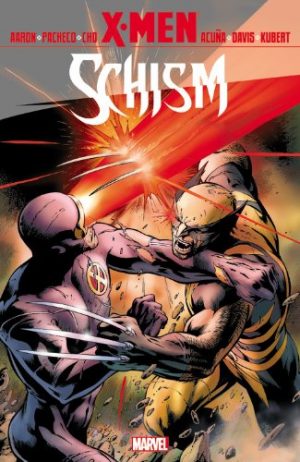Review by Frank Plowright
Back in the day, Mutant Massacre was Chris Claremont’s radical revamp of the X-Men, and in 1986 a proto-crossover that also involved several other heroes, most prominently X-Factor and Thor, but also Power Pack and Daredevil. It’s been a consistent seller for Marvel, issued in three graphic novel editions over the years (four counting the Omnibus, which almost triples the page count).
The first appeared in 1996, and is a slightly slimmer version of what became the standard content, missing out a few crossover chapters, and very puzzlingly, the epilogue chapter with art from Barry Windsor-Smith, which one might have thought very desirable. It’s the least essential version. Otherwise there’s little to choose between the 2010 hardcover and the 2019 Milestone paperback, both requiring a dense catch-up page explaining then current continuity. Of primary relevance is that the X-Men have become fractured, Cyclops has left his wife to reunite the original X-Men as X-Factor, who pose as mutant-hunters, but actually protect their targets, knowledge not shared with the X-Men.
Over the opening chapters there’s much repetitive anti-mutant sentiment to establish the climate, although it’s nice to be reminded what an original character Artie was, only able to communicate visually. The X-Men have connections with a group of less photogenic mutants living widely spread through the tunnels beneath New York, and the core story begins when a new group of villains called the Marauders start killing Morlocks indiscriminately. Claremont and John Romita Jr devised around a dozen new characters for the Marauders, and added Sabretooth to provide a terrifying bunch of amoral killers.
Mutant Massacre would be a better experience for excerpting the relevant pages from chapters that have almost nothing to do with the core events. Thor, for instance, spends nineteen pages concerned with his own problems before taking a trip to the tunnels. Thankfully Power Pack’s introduction under Louise Simonson, also responsible for the X-Factor material, is more immediate, and one of the better chapters overall, the presence of children against savage murderers unpleasantly tense.
None of the art is poor, and some is surprising. Butch Guice (then Jackson Guice) is beginning to find his style on an impressive New Mutants chapter, and Rick Leonardi has always been under-rated. The sample spread shows Sal Buscema and Walter Simonson, while Romita Jr’s layouts pack more characters into every panel than anyone else, yet there’s still a sense of space. Alan Davis and Windsor-Smith are always welcome.
Mutant Massacre features the expository dialogue and thoughts, and overwrought emotion characteristic of the era, with Claremont the biggest offender. Allow for it, though, and this remains a thrilling read, and because prominent characters start falling early, there’s never a sense of anyone being safe. By the end several X-Men are out of action, new X-Men have been introduced, and the ground has shifted for X-Factor, which is unusual for any crossover series. What prompted the Marauders’ rampage is only ever mentioned briefly, again characteristic of Claremont’s writing and tendency to leave plot threads dangling for long periods. It teased (or frustrated) in the monthly comics, but doesn’t transfer well to collections. The instigating villain, by the way, is the then never before seen Mr Sinister, but only pictured on the cover of the Milestones edition.
The X-Men chapters alone are also available in the 14th Uncanny X-Men volume of Marvel Masterworks, while X-Men: Mutant Massacre Omnibus additionally dwells considerably on the aftermath.
